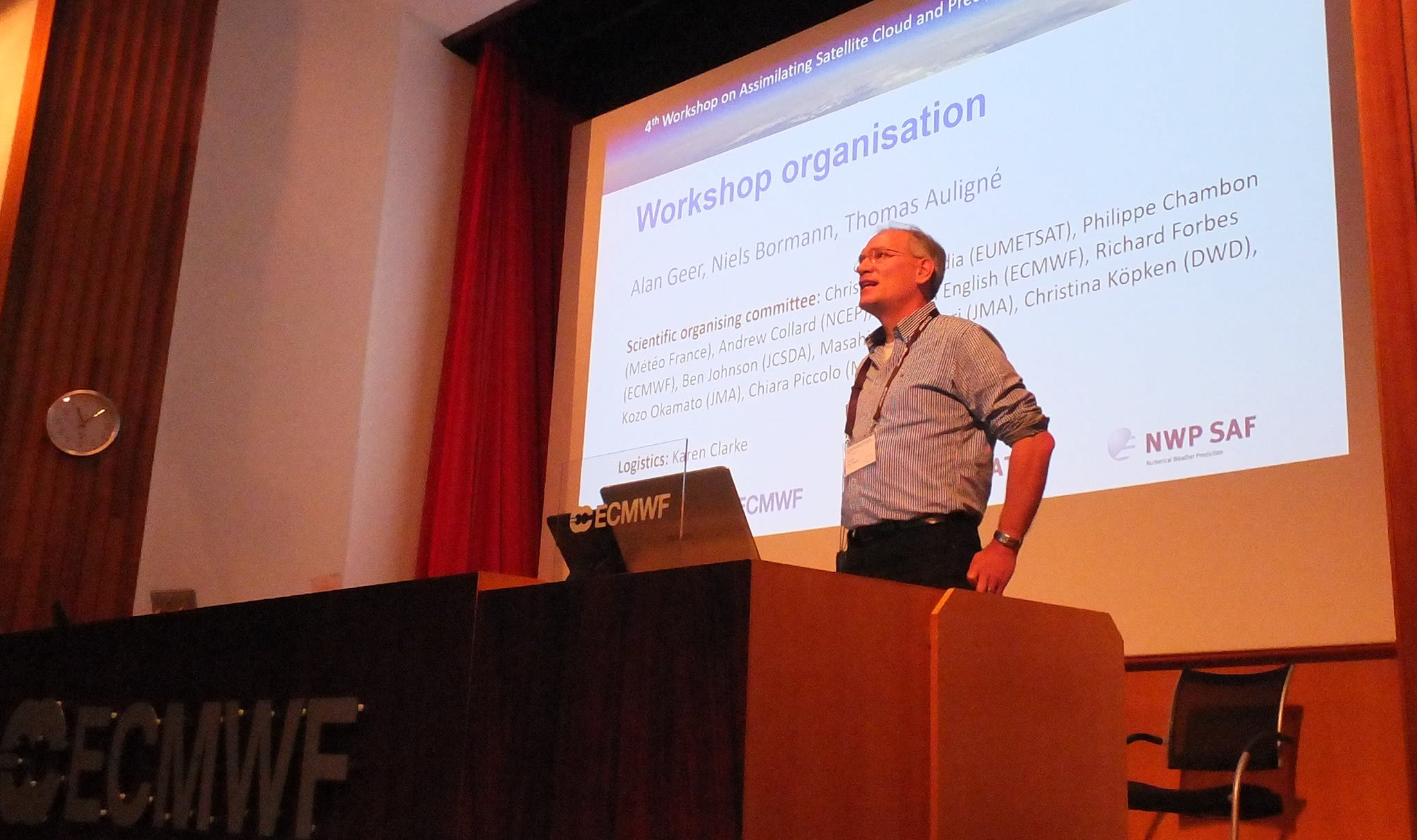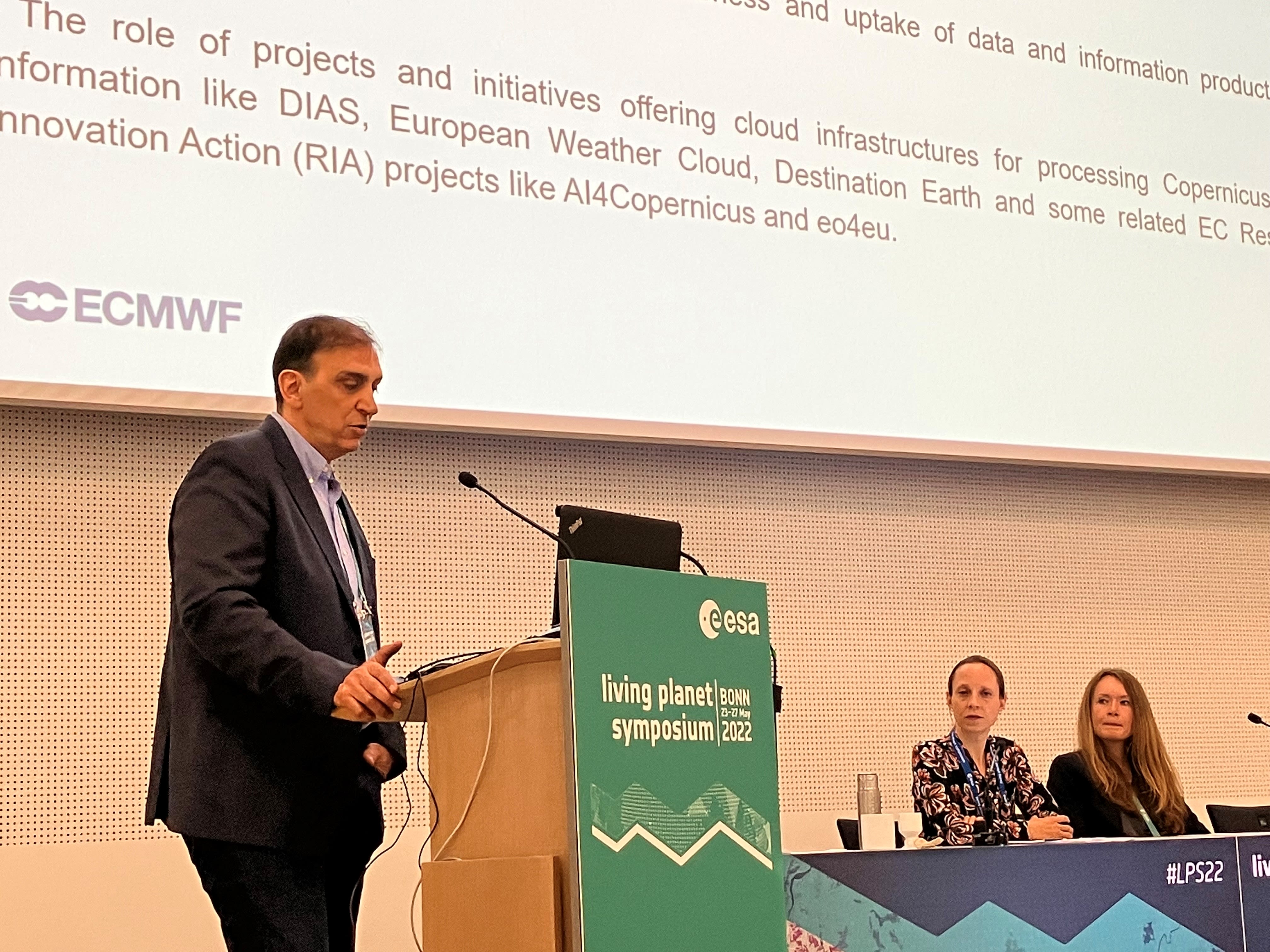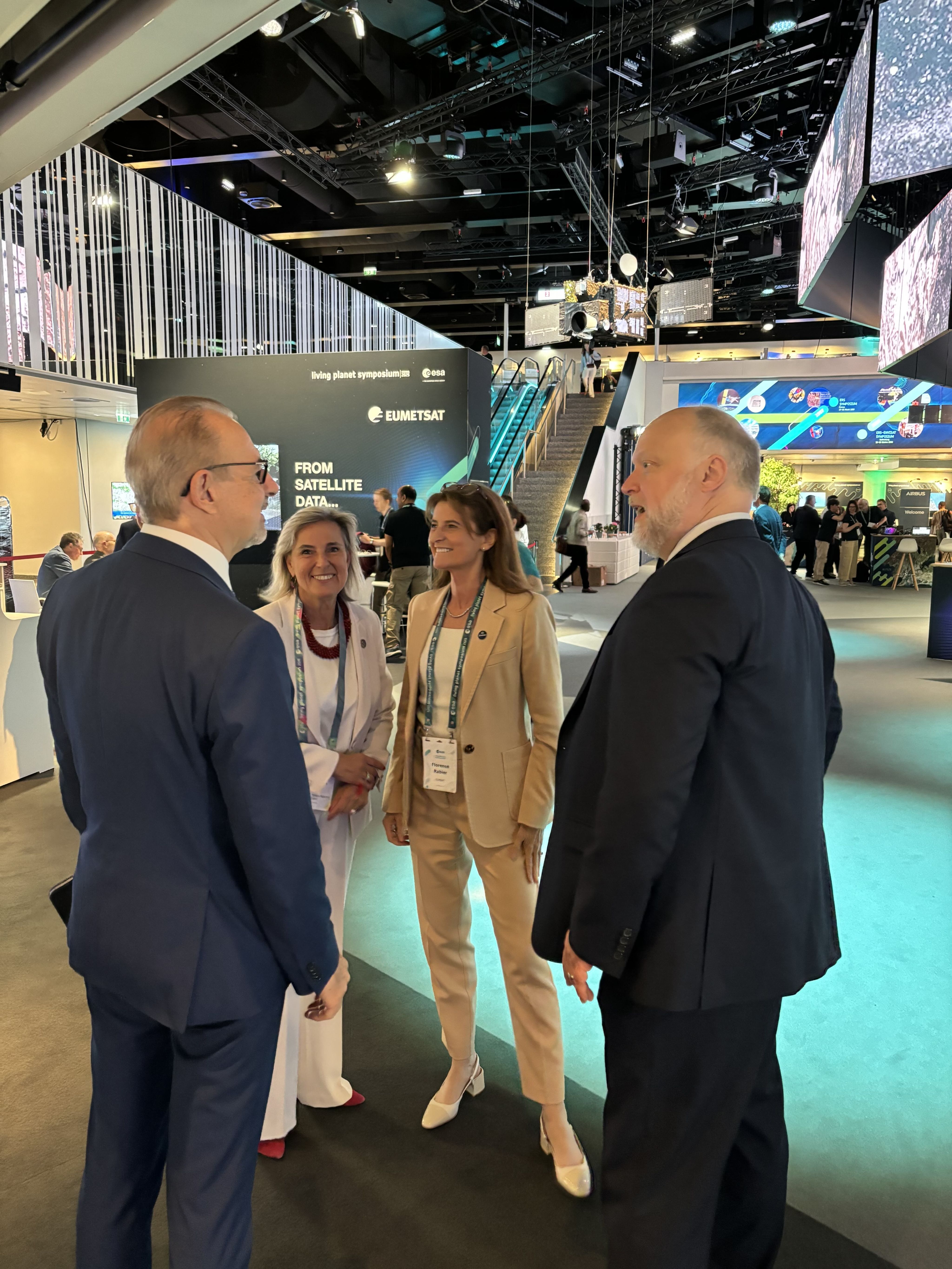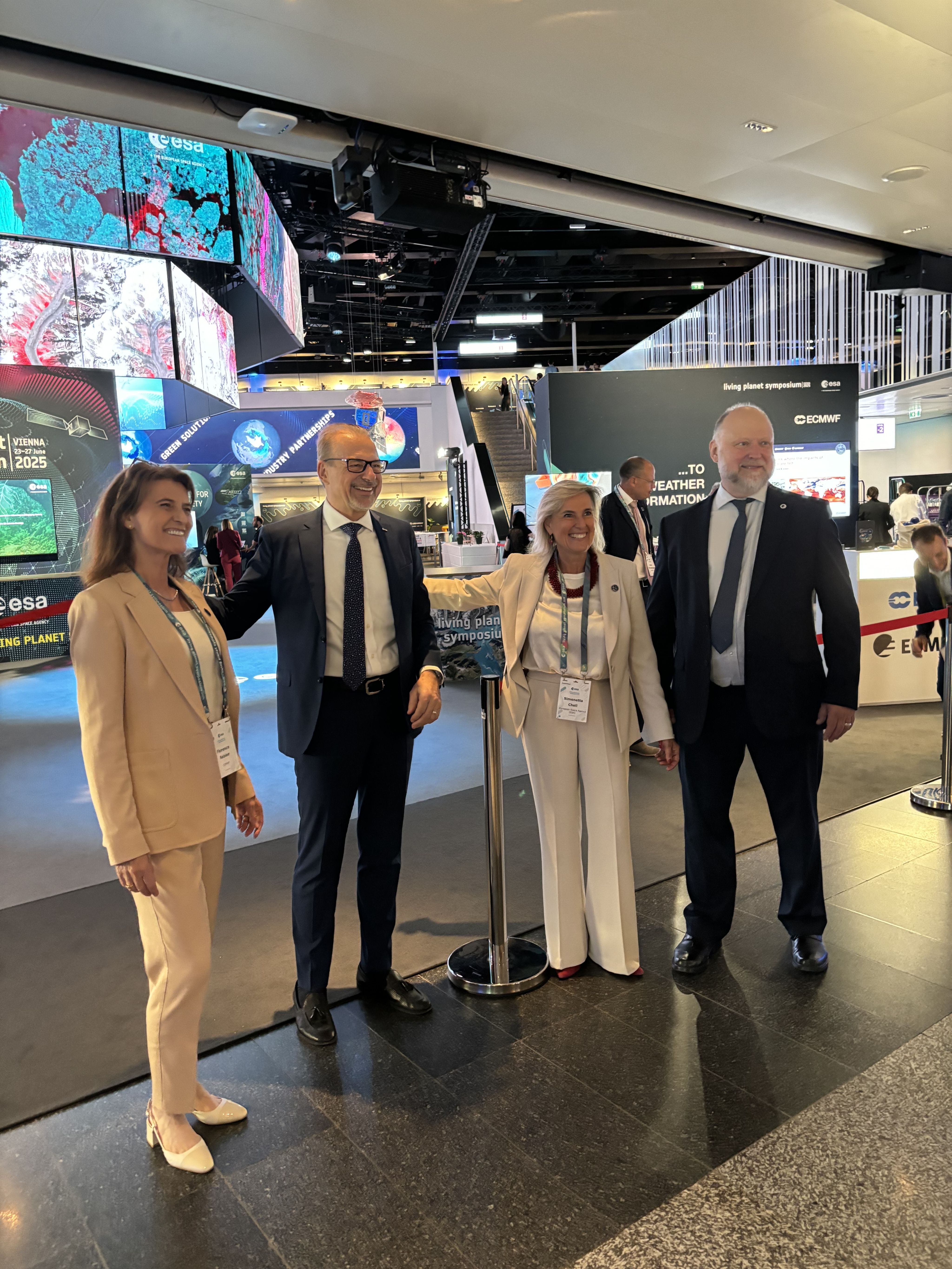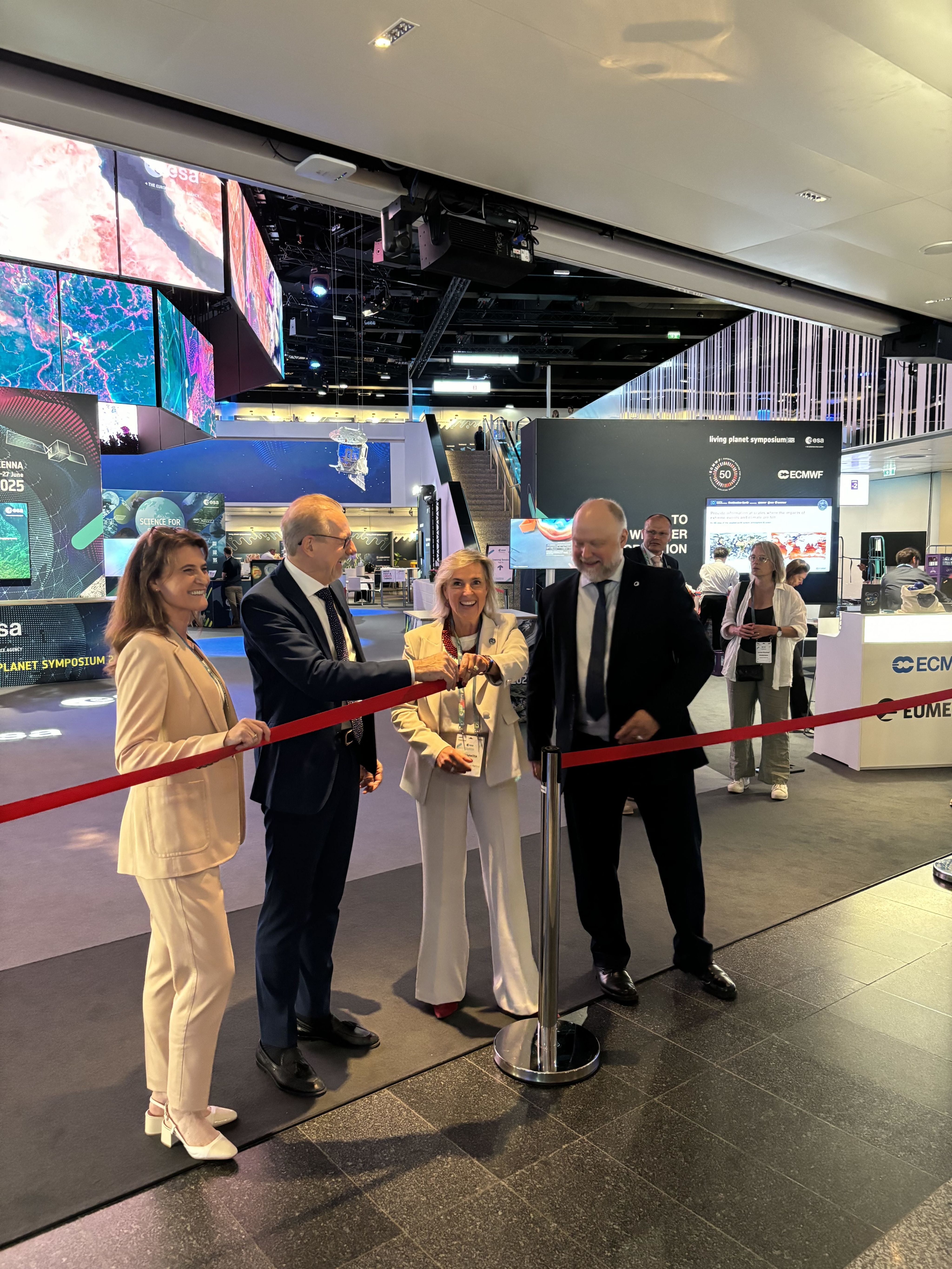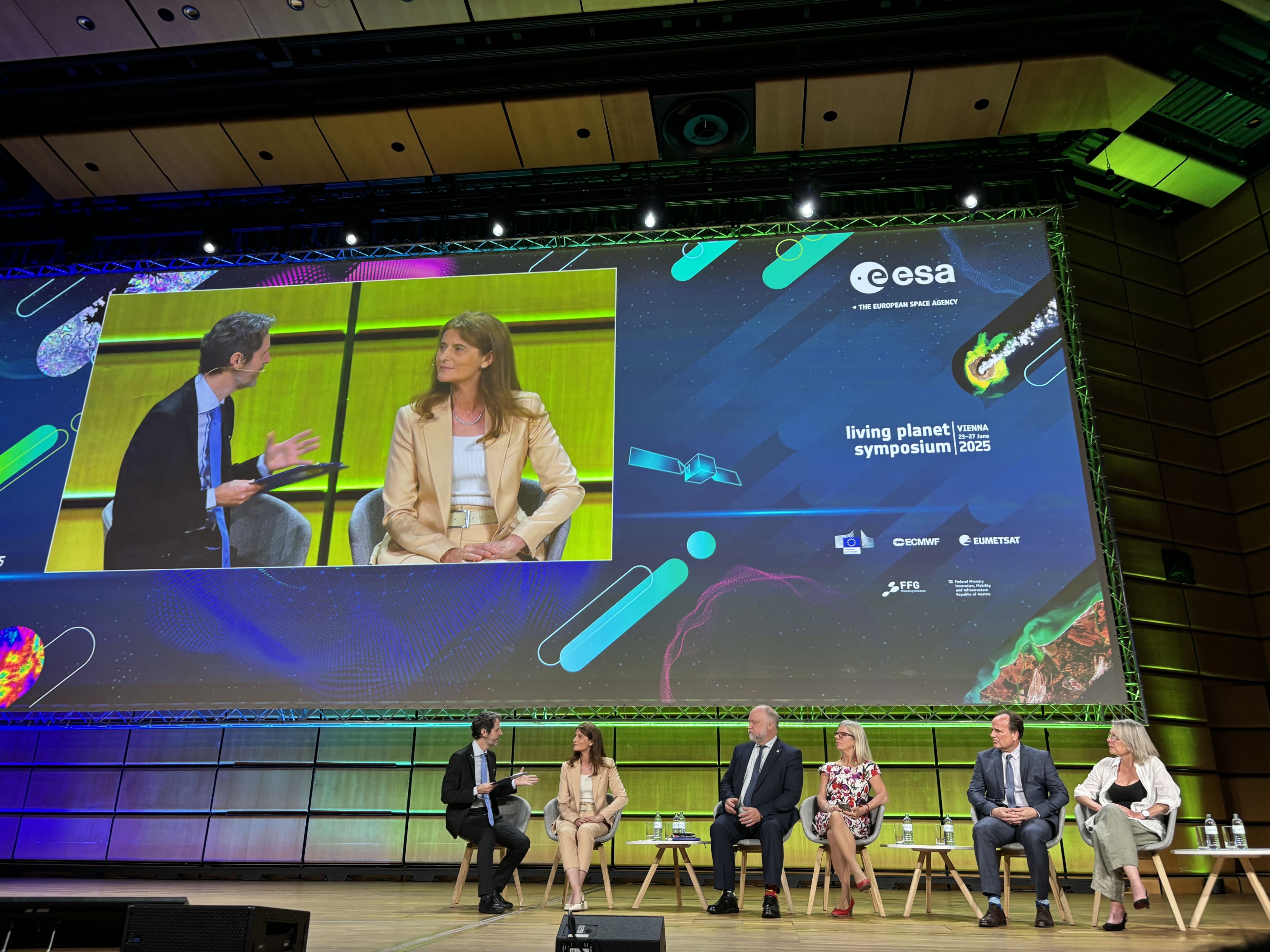ECMWF at Living Planet Symposium
Speakers and Sessions
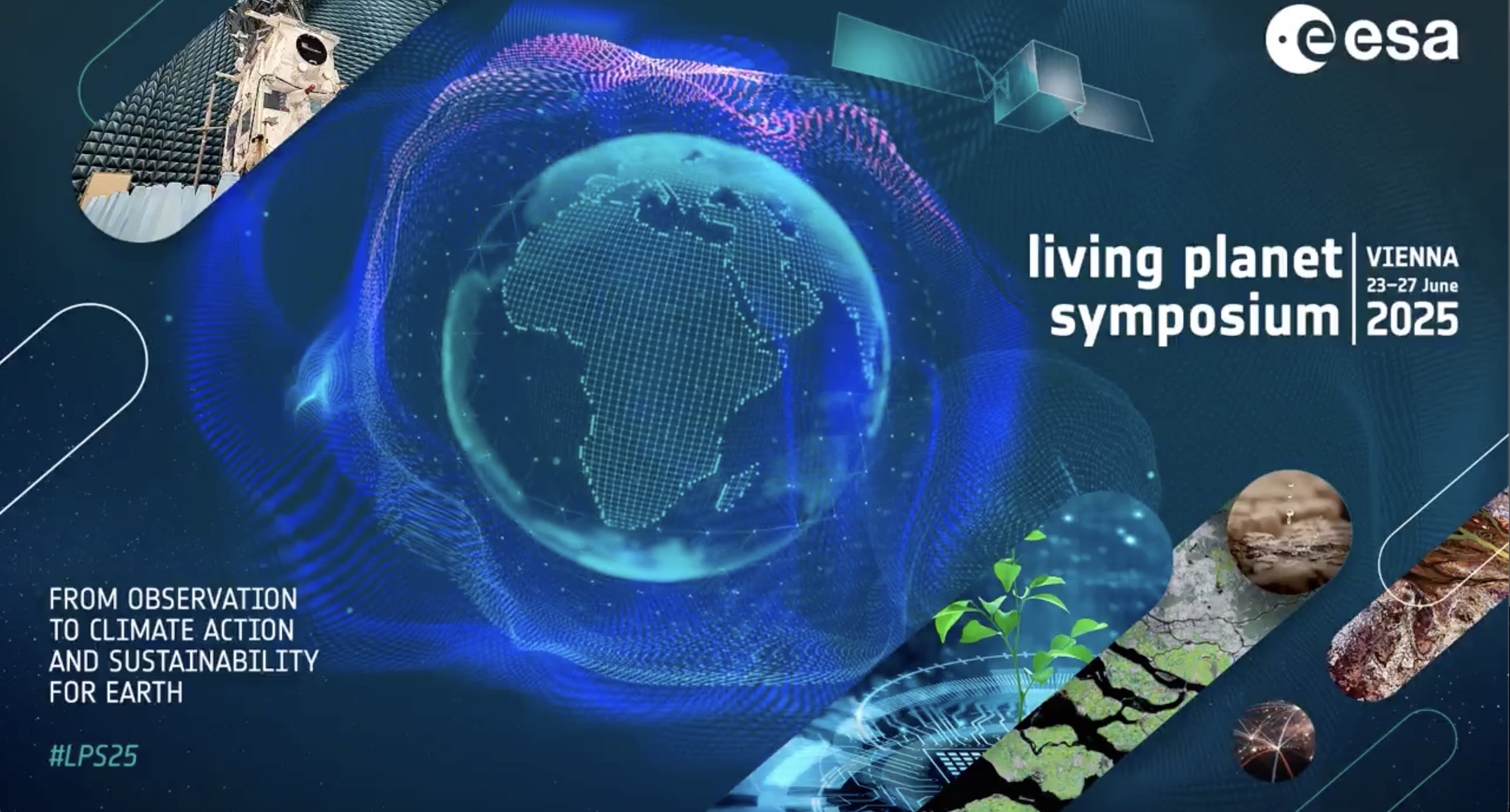
Sunday, 22 June
Joao Martins, Joaquin Munoz & André Obregón: Tutorial - Using Earth Observations within Climate Applications that are Fit for Your Purpose
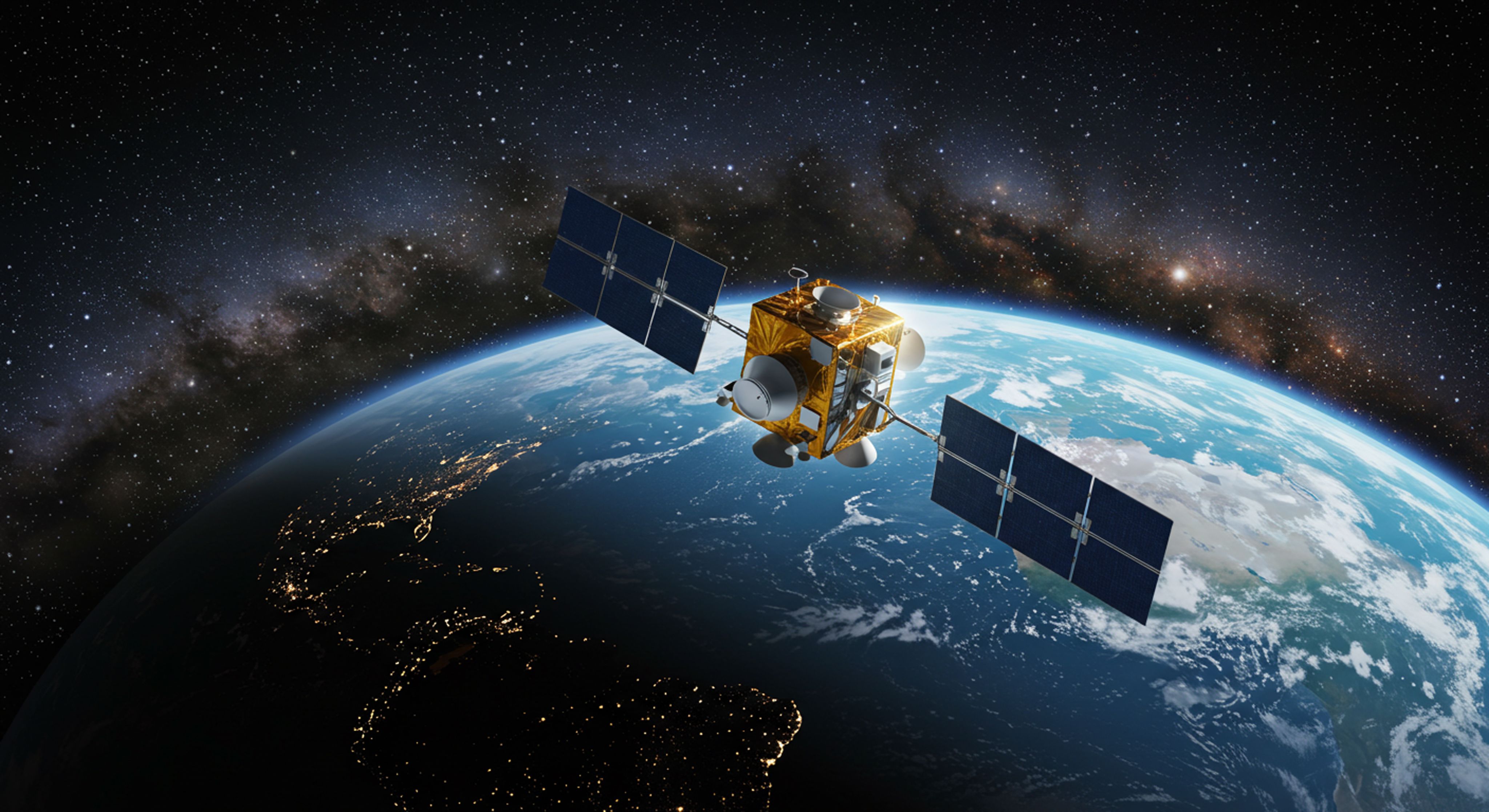

Monday, 23 June
Florence Rabier: Opening session
Irina Sandu: DestinE’s Earth system digital twins
Tsz Yan Leung: Impact of assimilation sea-ice thickness on the ECMWF system – DANTEX/CRISTAL
Marijana Crepulja: Tutorial - EarthCARE sample dataset handling
Meet and Greet
Stephen English on Earth systems, 17:00 -17:45, ECMWF Booth (entrance hall, level 0)
Photo of Florence Rabier, Director-General ECMWF
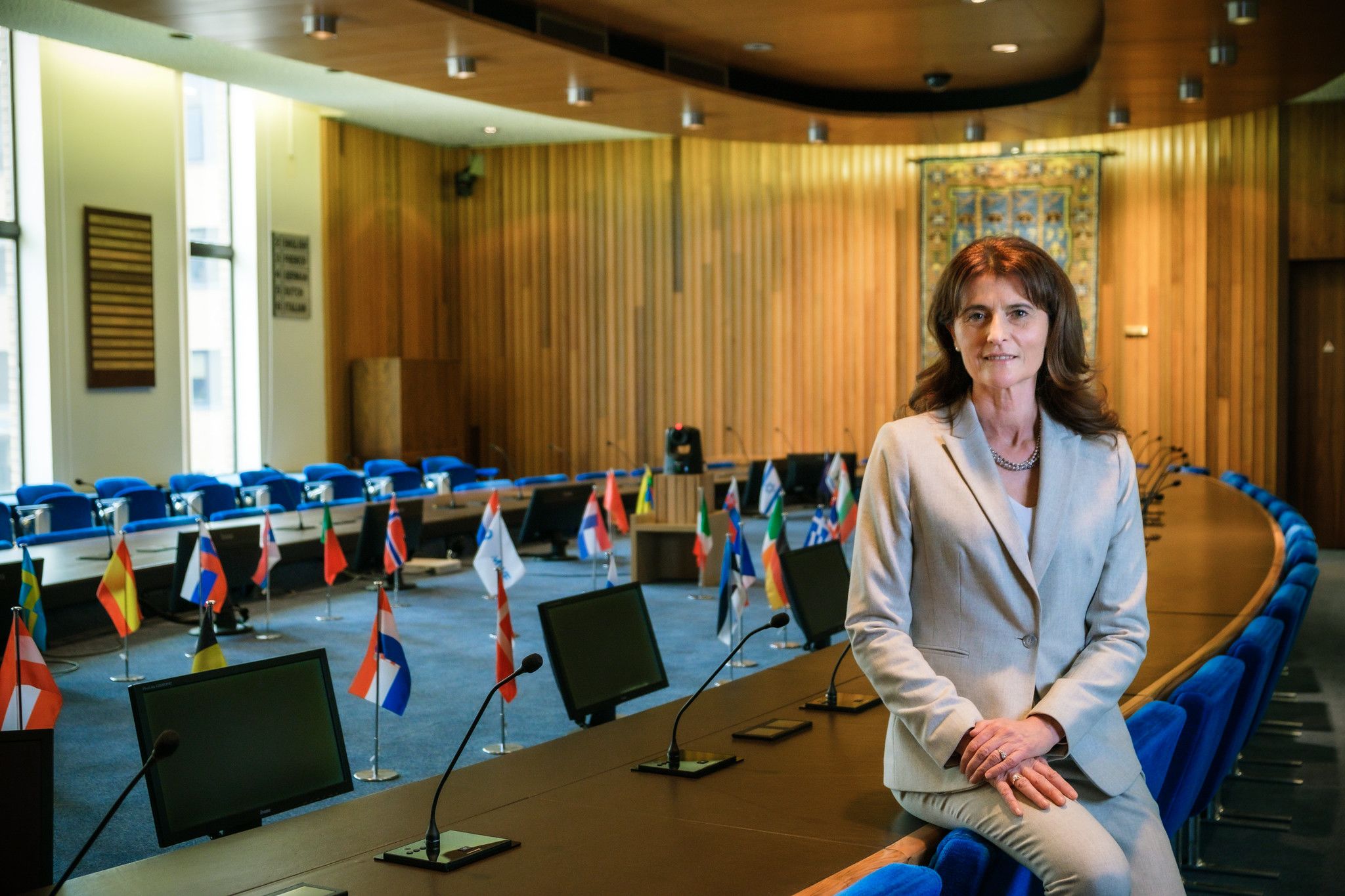
Tuesday, 24 June
Jörn Hoffmann: Collaborative Innovation: building a Digital Twin of the Earth System
through Global and Local Partnerships
Christopher Kelly: Preparations at ECMWF for the use of ALTIUS data within CAMS
Patricia de Rosnay: GNSS-R land data assimilation at ECMWF
Sebastien Garrigues: Toward the development of coupled carbon and water cycle land data assimilation in the ECMWF Integrated Forecast System (IFS) by leveraging machine learning and new types of Earth observations
Katrin Lonitz: Developing a forward operator for GNSS polarimetric radio occultation observations
Tracy Scanlon: Using information from microwave imager radiances to improve the ocean analysis in a coupled atmosphere-ocean model
Marijana Crepulja: Handling observations in BUFR format
Poster
Delphine Deryng: Leveraging Destination Earth capability for Assessing Physical Climate Risks to the European Central Bank
Katrin Lonitz: The impact of assimilating GNSS Radio Occultation data on the sub-seasonal forecast
Christian Borger: Advancing Health Impact Assessment with Air Quality Data from IoT/Low-Cost Sensors
Meet and Greet
Irina Sandu on Destination Earth, 15:30 -16:15, ECMWF Booth (entrance hall, level 0)
Evening reception, 17:15 - 19:00 CEST
Photo of Jörn Hoffmann, Application Partnerships Lead at ECMWF and Marijana Crepulja, Scientst
Wednesday, 25 June
Shannon Mason: A first look at the contributions of the first global Doppler velocity measurements to EarthCARE’s synergistic cloud and precipitation retrievals
Robin Hogan: Simultaneous evaluation of clouds and radiation in the ECMWF model using EarthCARE
Christian Borger: Machine Learning for Earth System Observation and Prediction
Mark Parrington: Evaluating fire emissions and atmospheric composition impacts of North and South America wildfires in 2024
Poster
Claudio Pisa & Vasileios Baousis: Leveraging Earth Observation for Resilient and Sustainable Urban Development: The BUILDSPACE Approach
Meet and Greet
Carlo Buontempo on the Copernicus Climate Change Service (C3S), 13:30 -14:30, ECMWF Booth (entrance hall, level 0)
Photo of Mark Parrington, Scientist
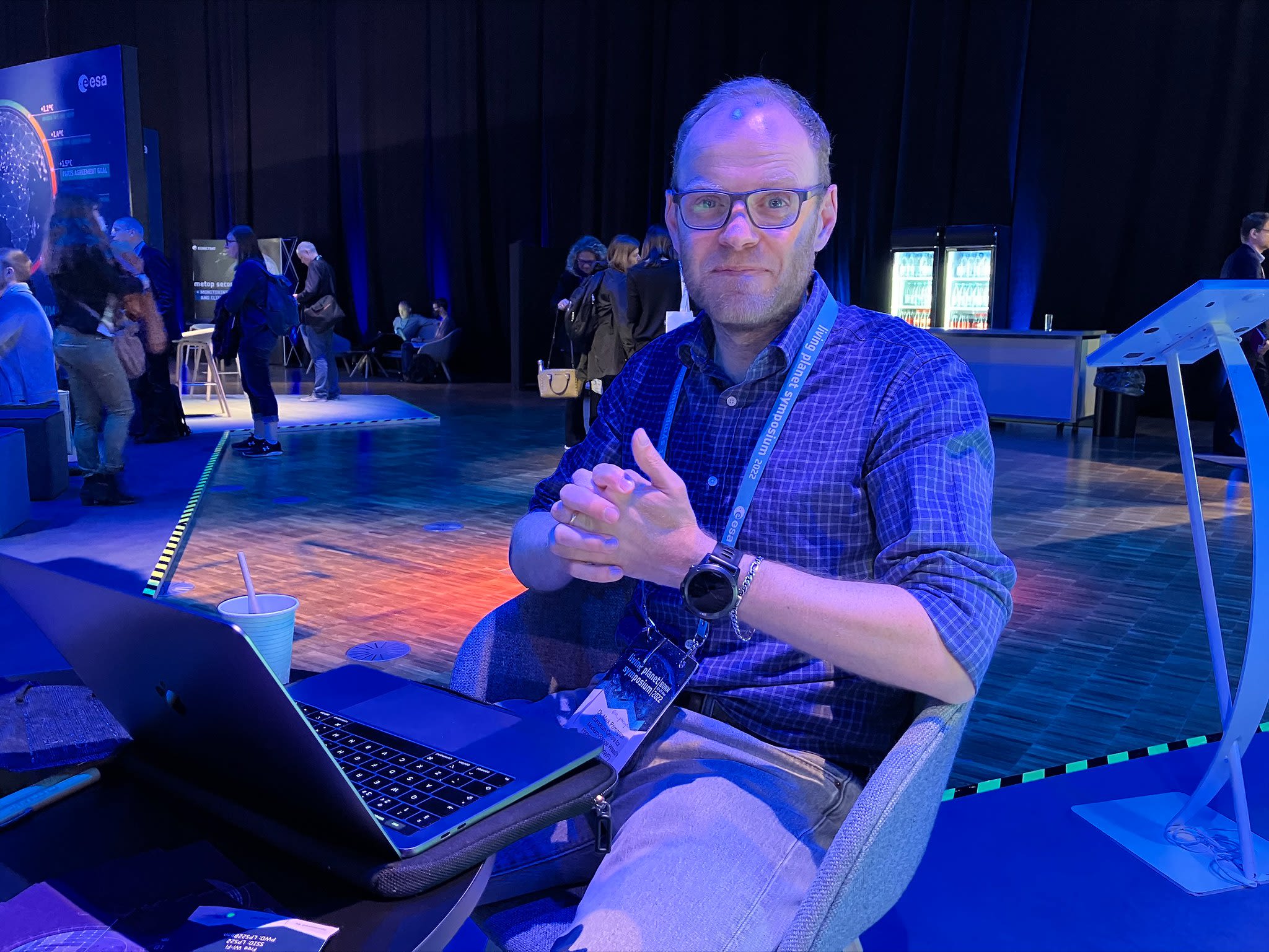
Thursday, 26 June
Niels Bormann: Passive Microwave Data Assimilation in ECMWF’s Coupled Earth System Over Arctic and Antarctic With Focus on Sea Ice – presented by Christoforos Tsamalis
Joao Paulo Martins: Evaluation and Quality Control of Satellite ECVs at C3S – An Innovative Way of Conveying Quality and Fitness for Purpose Information
Vasileios Baousis: Unifying HPC and Cloud Systems: A Cloud-Native Approach for Infrastructure Integration
Joaquín Muñoz Sabater: Advancing Climate Monitoring with Satellite Data: The Role of the Copernicus Climate Change ECV Programme
Sebastien Massart: Optimal sea-ice concentration estimation from atmospheric assimilation of surface-sensitive radiances from microwave imagers
Christoforos Tsamalis: Passive Microwave Data Assimilation in ECMWF’s Coupled Earth System Over Arctic and Antarctic With Focus on Sea Ice
Ernest Koffi: The Copernicus Monitoring Service for Anthropogenic Greenhouse Gas Emissions
Poster
Raluca Radu: From ERA5 to ERA6: the Status of the Operational Reanalysis and the Next Generation of Reanalysis at ECMWF
Joao Paulo Martins: Evaluation and Quality Control of Satellite ECVs at C3S – An Innovative Way of Conveying Quality and Fitness for Purpose Information
André Obregón: Are our satellite data fit for your purpose? – The C3S approach to delivering quality information to users
Auke Visser: Using satellite observations of co-emitted species to better constrain CO2 emissions
Claudio Pisa: Co-Creating Climate-Resilient Urban Ecosystems: The ClimRes Project
Mohanad Albughdadi: DeployAI: Leveraging AI and Earth Observation for Environmental Applications
Meet and Greet
Laurence Rouil on the Copernicus Atmosphere Monitoring Service (CAMS), 15:30 -16:15, ECMWF Booth (entrance hall, level 0)
Photos of Niels Bormann, Scienst and Vasileios Baousis, Scientist
Friday, 26 June
Stephen English: Evaluating the potential impact of EPS-Sterna and hyperspectral MW observations for global NWP in an Ensemble of Data Assimilations (EDA)
Stephen English: Trends, challenges and communicaition on RF interference and frequency managemen
Giovanna De Chiara: The impact of Aeolus wind observations on the predictability of tropical cyclones
Vasileios Baousis, Claudio Pisa, Mohanad Albughdadi & Tolga Karpol: Copernicus data and services uptake with EO4EU, an AI-augmented ecosystem for Earth Observation data accessibility with Extended reality User Interfaces for Service and data exploitation
Christian Borger: Assessing the Feasibility of IoT/Low-Cost Sensors for Air Quality Monitoring: Insights from the AD4GD Project
Michael Rennie: Assimilation impact of Aeolus on the representation of extratropical atmosphere dynamics in NWP models
Patricia de Rosnay: SMOS L-band data for Numerical Earth-system Weather prediction at ECMWF
Zdenko Heyvaert: Potential of Thermal Infrared Observations for Coupled Land-atmosphere Assimilation in Earth System Predictions Systems – DANTEX/LSTM
Christoph Herbert: Exploiting the Extended Control Vector Framework for Improved Coupled Land-Atmosphere Data Assimilation
Poster
James Steer: Progress Towards Assimilating Synthetic Aperture Radar Wave Mode Products at ECMWF
Kirsti Salonen: Machine learning SMOS soil moisture product assimilation at ECMWF
Kirsti Salonen: Cloud and aerosol analysis with the ECMWF system
Photo of Kirsti Salonen, Scientist
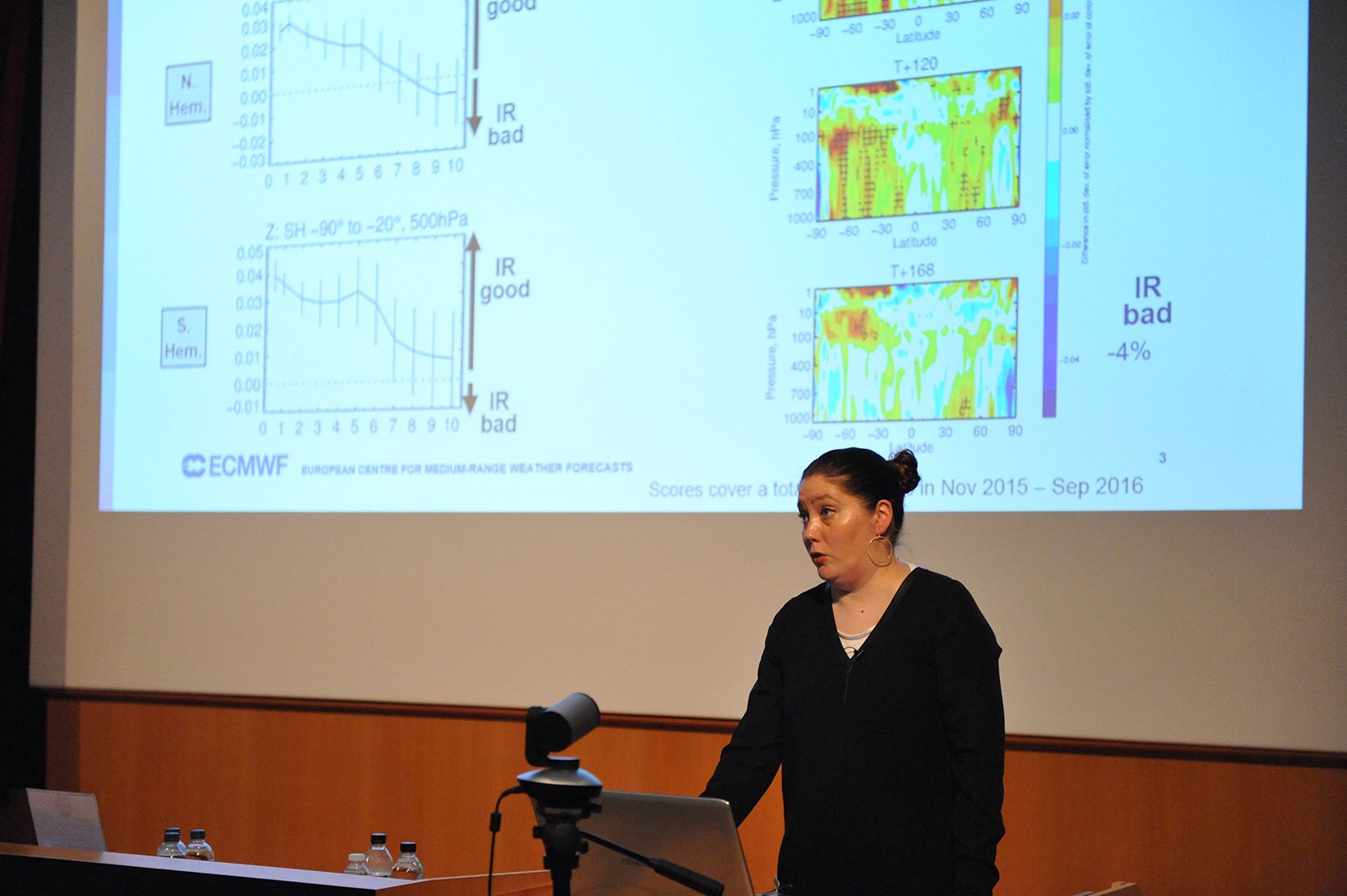
4th Destination Earth User eXchange
Wednesday, 25 June
Irina Sandu: From Vision to Impact: Unlocking Destination Earth's Potential for Users
Benoît Vannière: The Global Extremes Digital Twin: development status and future directions
Sebastian Milinski: Addressing Application Needs for Climate Adaptation
Thursday, 26 June
Tiago Quintino: Addressing Data and Service Needs
Jörn Hoffmann: Listening to the Users: Turning Feedback into Functionality
André Obregón: Designing a Quality Control Framework Concept for DestinE
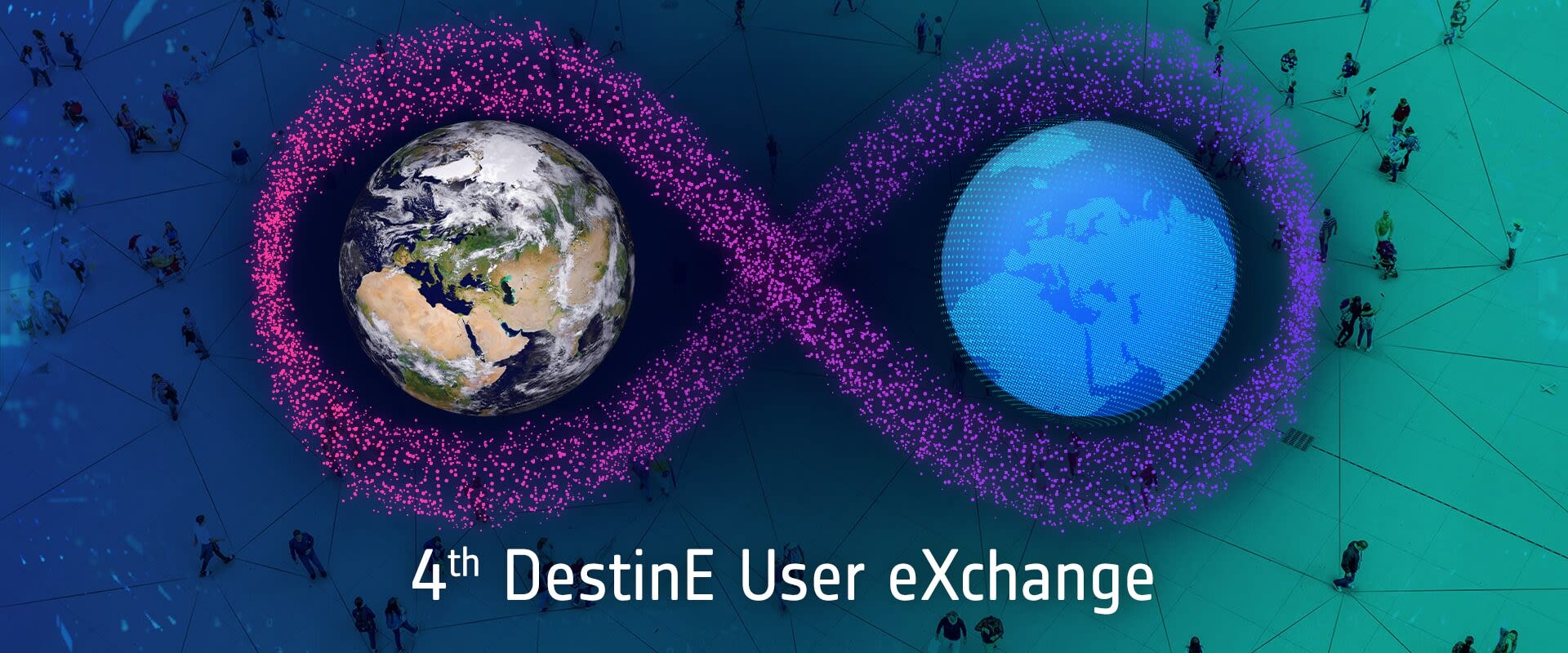
Click to find out more about the ECMWF sessions and speakers at Living Planet Symposium.
The European Centre for Medium-Range Weather Forecasts (ECMWF) is both a research institute and a 24/7 operational service, producing global numerical weather predictions and other data for our Member and Co-operating States and the broader community. More information.
Copernicus is the European Union's (EU) flagship programme for monitoring Earth’s environment using satellite and in-situ observations. It delivers operational data and information services through six themed Copernicus Services. These deliver value-added products, tailored to more specific public or commercial needs. ECMWF is implementing the Copernicus Atmosphere Monitoring Service (CAMS) and the Copernicus Climate Change Service (C3S).
Destination Earth (DestinE) is the ambitious initiative of the European Union to create a digital twin or replica of the Earth system, together with the European Space Agency (ESA) and the European Organisation for the Exploitation of Meteorological Satellites (EUMETSAT), under the leadership of DG CNECT.
Visit the LPS25 website for more information.



